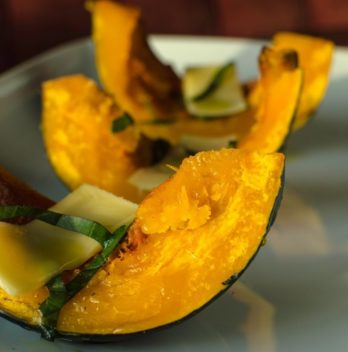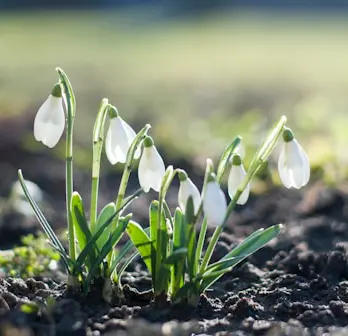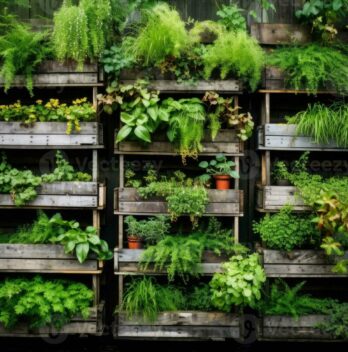Buttercup squash is a kind of kabocha winter squash that is an heirloom native to the Western Hemisphere. This type of squash is pretty tasty and versatile. However, cutting and preparing them may be quite intimidating. Hence, this brings us to the question: how do you peel a buttercup squash?
But once you’ve perfected how to prepare and peel a buttercup squash, then it’s time to continue enjoying the variety of buttercup squash.
So, if learning the easy way of preparing or peeling buttercup squash interests you, then let’s look right into this.
A Little About Buttercup Squash
Before we delve into how to peel a buttercup squash, let’s briefly look into some details about this squash.
Buttercup squash is a type of winter squash that often appears dark green and it is a variety of Marialva Cucurbita maxima. Take note not to confuse the buttercup squash with its cousin butternut squash.
This winter squash tends to weigh around 5 to 7 pounds each. It also has an average diameter of about 10 to 20 centimeters and a height of around 5 to 7 centimeters.

They tend to be round in shape and they grow with a very distinctive protruding ring around the lower end that is opposite the stem end. It’s been suggested that this squash has an upside-down acorn shape with an undersized cup.
Click here to learn about:
How To Peel Buttercup Squash?
As we mentioned, buttercup squash may seem daunting to prepare or peel. They tend to be dense and their outer part is very hard and thick and this majorly contributes to the difficulty in peeling them. This is why we will be tipping you on the easy and sure way how to peel or safely prepare buttercup squash.
Peeling buttercup squash can be difficult and very tricky and this is not usually necessary even when you plan on cooking them. Peeling butternut cups is not compulsory, you can leave the skin on while you cook them.
Another thing you can easily do is scoop out the flesh of this squash. Make use of a sharp and big heavy knife and gently split the buttercup squash into half lengthwise through the stem. Then with the help of a heavy spoon, scrape out the seeds and make sure you save the seeds to roast later. Then you can cook this squash according to the recipe you desire.
However, if you still wish to peel and cut your buttercup squash, start by piercing the skin of the buttercup squash all over using a knife or fork. Then microwave the buttercup squash for about 2 to 4 minutes or longer depending on the size.
Then allow the buttercup squash to cool down and you can begin peeling and cutting. After doing this, microwave again to soften and loosen the skin so that the skin can fall off more easily.
All-in-One Squash Peeler and Seed removal tool
Is Eating The Skin Of A Buttercup Squash Ideal?
Basically, all squash is an edible fruit. However, edible does not mean you want to eat them. Some squash offers thin skin that is tasty and tender. Other types of squash on the other hand deliver a very tough shell that even when you cook them, tends to give this stringy and chewy bite that we prefer to avoid.
However, if you wish to eat the skin of your squash, you can, by all means, do so.
The Taste Of Buttercup Squash
The flavor of buttercup squash is sweet and nutty. The thin outer skin of this winter squash surrounds a sweet-flavored, slightly nutty orange-tasting flesh. This tends to be a fine-grained, creamy texture with a dense consistency.
The inner flesh is orange and sweet and it’s been said that the more intense the inner colors are, the more vitamin A it contains.
Read more about Plants That Need Calcium
Cooking Applications Of Buttercup Squash
Buttercup squash tends to be slightly dry but this can be alleviated by steaming or baking. It can serve as a possible substitute for butternut squash, sweet potato, or delicata squash.
You can stuff buttercup squash and you can bake with it. You can as well microwave it and serve it in soups, casseroles, pumpkin pie, or simply as a side dish. Buttercup can as well be pureed to make a creamy soup.
Furthermore, the seeds are very useful in your cooking, so always remember to save the seeds of buttercup squash. You can roast the seeds just like with pumpkin seeds for a tasty snack.
Find more information about Can You Eat Kabocha Squash Skin?
Storing Buttercup Squash
This squash should be wrapped in plastic, refrigerated, and stored for several days. You can store cooked buttercup squash for 1 to 2 days when refrigerated. However, when you freeze this squash, it can be stored for 3 months approximately.
You can as well store your buttercup squash at room temperature (50 to 55 degrees) in a cool and dry place and it will last up to 3 to 6 months.
Health Benefits Of Buttercup Squash
Here are some great health benefits buttercup squash offers:
- Carotenoid: just like every other winter squash, buttercup squash is a wonderful source of carotenoid and this is a nutrient that enhances night vision and eye health. Vision accuracy tends to decrease with age. Therefore, the elderly need to obtain adequate dietary carotenoids. Carotenoid also offers carotenoid property which also helps reduce the risk of cancer.
- Vitamin C: vitamin C is another great nutrient buttercup squash is loaded with. This plays a crucial role in immune function and the prevention of diseases.
- Vitamin A: buttercup squash also contains a good amount of vitamin A. Buttercup squash has an orange inner flesh color and it is said that the more intense the inner flesh color is, the more vitamin A it contains.
- Potassium: this winter squash is as well loaded with potassium nutrients. This element helps lower blood pressure.

How Long Does it Take to Boil Buttercup Squash?
You can boil buttercup squash on the stove or in an instant pot. The time it takes to cook will depend on the size and shape of the squash and your desired tenderness level. Here are some general guidelines for boiling buttercup squash:
Stovetop:
- Cut the squash into 1-2 inch cubes.
- Place the cubes in a pot and add enough water to cover the squash.
- Bring the water to a boil and reduce the heat to a simmer.
- Cook the squash for 10-15 minutes or until it is tender. You can use a fork to poke the squash to test for doneness. If the fork easily pierces the flesh, the squash is done.
- Drain the water from the pot and serve the squash.
If you prefer your squash to be softer, you may need to cook it for longer. On the other hand, if you like it firmer, you should cook it for a shorter period.
Instant Pot:
- Cut the squash into 1-2 inch cubes.
- Place the squash in the Instant Pot and add 1 cup of water.
- Close the lid of the Instant Pot and set the valve to the sealing position.
- Press the “Manual” or “Pressure Cook” button and set the cooking time to 5 minutes.
- When the cooking time is up, allow the pressure to release naturally for 5 minutes, then use the quick-release method to remove any remaining pressure.
- Carefully open the lid and test the squash for doneness. If the squash is not tender, you can cook it for an additional 1-2 minutes.
- Drain any excess water from the Instant Pot and serve the squash.
How Long Do You Cook Buttercup Squash in The Oven?
If you want to cook butternut squash in the oven, follow these steps:
- Preheat the oven to 375°F (190°C).
- Cut the squash in half, scoop out the seeds, and place the halves cut-side down on a baking sheet lined with parchment paper.
- Bake the squash for 30-40 minutes or until it is tender and easily pierced with a fork. If the squash is still firm, continue cooking and check for doneness every 5-10 minutes.
What to Do With Leftover Buttercup Squash?
You can use leftover squash in many delicious ways. Here are a few ideas:
Puree
You can puree the squash to use it as a base for soup. Add broth, spices, and other vegetables to create a creamy and flavorful soup.
Mash
You can use mashed squash as a topping for baked goods like bread, muffins, and scones.
Dice
If you dice your leftover squash, you can add it to stir-fries or pasta dishes for a pop of color and flavor!
Leftover squash can also make a great addition to salads and grain bowls when roasted. If you can’t use it immediately, you can freeze it in small portions. It will keep up to 5 days in the fridge and about 6 months in a freezer when properly sealed.
How To Can Buttercup Squash
Canning buttercup squash is quite a process. There are many different recipes you can follow. Here is a basic one:
The ingredients you’ll need are:
- Fresh buttercup squash
- Water
- Salt (optional)
- Canning jars with lids and rings
- A large pot or canning kettle
- A jar lifter or tongs
- A canning funnel (optional)
Follow these instructions:
- Wash the squash thoroughly and cut it into small pieces. Remove the seeds and any tough or fibrous parts.
- Fill a large pot or canning kettle with water and bring it to a boil. Place the jars in the pot and sterilize them for 10 minutes. Remove the jars from the pot and set them aside to cool.
- Bring water to a boil in a separate pot and add the squash pieces. Boil the squash for 5 minutes or until it is tender.
- Drain the squash and pack it into the sterilized jars, leaving about 1 inch of headspace at the top. If you are using salt, add 1/2 teaspoon per quart jar or 1/4 teaspoon per pint jar.
- Use a canning funnel (if available) to pour hot water over the squash in the jars, leaving 1 inch of headspace. Use a wooden or plastic utensil to remove any air bubbles.
- Wipe the rims of the jars with a clean cloth and place the lids and rings on top. Tighten the rings until they are finger-tight.
- Place the jars back in the pot or canning kettle and ensure they are covered by at least 1 inch of water. Bring the water to a boil and process the jars for 45 minutes (for quarts) or 35 minutes (for pints).
- Use a jar lifter or tongs to carefully remove the jars from the pot and place them on a towel to cool. As the jars cool, you should hear a popping sound. This indicates that the lids have been sealed properly.
If you want to double-check that the jars have sealed, press down on the center of the lids. If the lids do not move, they are sealed. If the lids move or pop up, they are not sealed. Canned buttercup squash will keep in a cool, dark place for up to a year.
How To Peel A Buttercup Squash: Conclusion
Learning how to peel buttercup squash has been discussed in this guide. We have also looked into some other related things you need to know about this great-tasting winter squash.
FAQ’s
What is the easiest way to peel a buttercup squash?
I would suggest doing it the same way you’d peel a carrot, with a vegetable peeler. Cut the squash in half (or quarters if it is small) so that you can get to the inside more easily. Scrape out the seeds and cut the squash into manageable pieces. Then use the peeler to take off the skin in one continuous piece. I think this is the best method to get the skin off, and it doesn’t take a lot of time or effort.
What is the best way to store butternut squash?
Squashes are high in moisture content and should be used as soon as possible after purchase. If you want to store it for a while, the best way to store it is to bake it. That way, it retains moisture and nutrients. I’ve made a lot of roasted butternut squash dishes over the years, and they’re great reheated.
What happens if you refrigerate butternut squash?
It’s a great idea to freeze the butternut squash. If it’s well cooked, it will stay nice and firm for a long time. But don’t freeze the cooking liquid as it will separate from the butternut squash. Just drain the squash and pat it dry with paper towels. Place in a freezer bag or plastic container and store in the freezer for up to 6 months.
Can you eat the skin of a buttercup squash?
If you roast the squash, the skin becomes soft and can be eaten. If you boil the squash, the skin gets tough and is not edible. Buttercup squash is a great vegetable, and it’s also great roasted.
How long does buttercup squash keep?
Most winter squash can be stored in a cool dark place for up to three months.
How can you tell when a buttercup squash is ripe?
When it’s ripe, a buttercup squash will be full and soft. If it isn’t quite ready, the rind may be firm, but the inside will still be a bit hard. You can also tell by looking at the stem; if it’s green, it’s not quite ripe.
What is the best way to cook a buttercup squash?
Cut off the top of the squash and scoop out the seeds. If desired, peel the skin. Cut into halves or quarters and roast as directed in the recipe.

Eunice is an enthusiastic gardener with a passion for growing beautiful flowers. She loves nothing more than spending time in her garden, tending to her plants and enjoying the outdoors. Eunice has been gardening for over 15 years and has developed a unique style of landscaping that is both practical and aesthetically pleasing. She is especially fond of growing roses and enjoys experimenting with different varieties and colors. Eunice takes great pride in her garden and often shares the fruits of her labor with friends and family. In her spare time, she enjoys reading gardening magazines and attending local horticulture events. Eunice is passionate about her hobby and is always eager to share her knowledge and experience with others.





